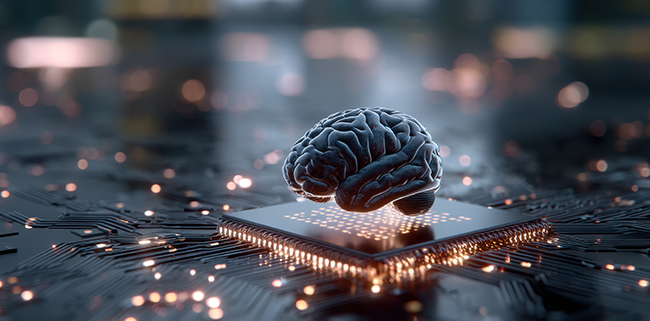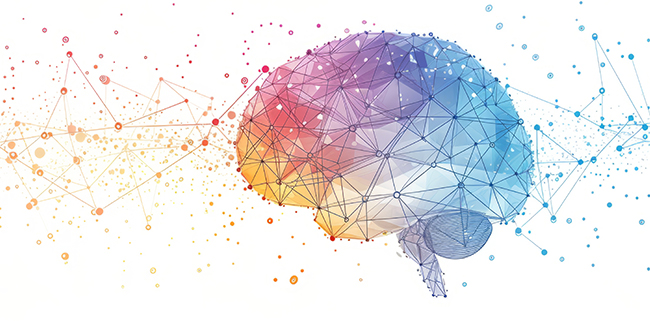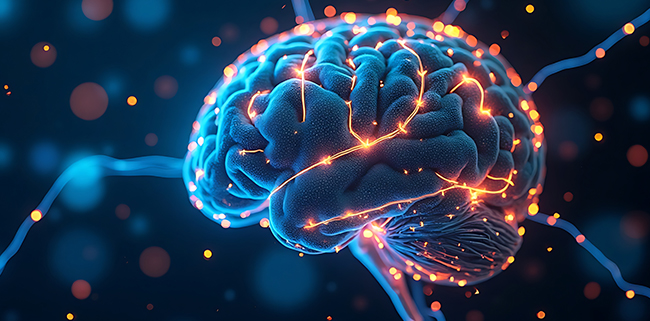When you’re not paying attention to the outside world — maybe you’re daydreaming on a bus, remembering a past holiday, or worrying about tomorrow’s to-do list — your brain is far from idle. Behind the scenes, a powerful system called the Default Mode Network (DMN) switches on. Discovered just over 20 years ago, the DMN has transformed our understanding of the brain. It’s now seen as a central hub for self-awareness, memory, imagination, and even emotional health.
Discovered just over 20 years ago, the Default Mode Network has transformed our understanding of the brain.
What Exactly Is the Default Mode Network?
The DMN is not one “thing” but a network of brain regions that work together when you’re at rest, not focused on a specific external task. It’s like the brain’s “screensaver mode” — except instead of doing nothing, it’s processing an enormous amount of internal information. In other words, the DMN is like your brain’s inner operating system — running in the background and shaping who you are.

Key Regions Involved
- Medial Prefrontal Cortex (mPFC): Linked to self-reflection, decision-making, and understanding your own and other people’s emotions.
- Posterior Cingulate Cortex (PCC) and Precuneus: Important for integrating experiences and creating a sense of self.
- Hippocampus: Essential for forming, retrieving and altering memories.
- Inferior Parietal Lobule (IPL): Plays a role in attention, perspective-taking, and social understanding.
The Brain’s Default Mode Network: The Hidden System That Shapes Your Mind
What Does the DMN Do?
The DMN is active when your brain turns inward. Here are some of its core functions:
- Self-awareness: Thinking about and understanding yourself, who you are, your values, and your identity.
- Time travel of the mind: Remembering the past and imagining the future.
- Social thinking: Guessing what others are thinking or feeling.
- Creativity: Combining ideas from different areas of memory to spark new insights.
- Emotional processing: Shaping how you feel and respond to stress, pain, or joy.
In essence, the DMN is your inner storyteller — weaving together past experiences, present emotions, and future possibilities.
Why Does It Matter?
The DMN is incredibly important for your well-being, your own sense of who you are and how you feel you fit into the world. The DMN plays a major role in many aspects of your health and well-being:
- Mental health: Overactivity in the DMN has been linked to depression and anxiety, especially with patterns of rumination (getting stuck in negative thoughts).
- Creativity: A balanced DMN helps you imagine, create, and connect new ideas.
- Pain perception: Many studies show chronic pain can alter DMN activity, making the brain more sensitive. People with ongoing pain often show altered DMN connectivity, suggesting the brain becomes “wired” to focus on pain.
- Sleep and recovery: The DMN winds down during deep sleep, which is thought to help the brain reset.

Can You Influence your DMN?
Yes. The DMN is flexible — shaped by experience, habits, and even therapy. This flexibility is part of what neuroscientists call neuroplasticity.
Ways to support healthy DMN function include:
- Mindfulness meditation: Often reduces DMN overactivity, helping people stay present instead of ruminating.
- Physical exercise: Improves connectivity between DMN and other brain networks, supporting mood and cognitive function.
- Quality sleep: The DMN naturally powers down in deep sleep, giving your brain time to reset.
- Chiropractic care: Early studies show adjustments can shift DMN activity, improving brain–body communication and improving your wellbeing.
Why This Matters for You?
The DMN shapes how you experience yourself and the world. If it’s balanced, you can reflect, imagine, and plan without getting trapped in negative loops. If it’s out of balance, you might find yourself stuck in overthinking, unable to sleep, or weighed down by stress and pain.
By supporting your brain through lifestyle habits, chiropractic care, and stress management, you’re not just helping your body — you’re also tuning your inner operating system.
Chiropractic Care and the Default Mode Network
Emerging research suggests that chiropractic adjustments can influence the activity of the Default Mode Network. Studies using EEG and other brain imaging techniques have found that adjustments can alter patterns of Alpha and Theta brain waves within DMN regions, particularly those linked to self-awareness and emotional regulation. This is important because disrupted DMN activity has been associated with chronic pain, poor sleep, and mood disorders like depression and anxiety. By helping restore more balanced communication between the spine and brain, chiropractic care may support healthier DMN function — thereby reducing pain, calming mental overactivity, and enhancing overall well-being.
The Default Mode Network is more than a curiosity of neuroscience — it’s central to how we think, feel, and experience the world. By caring for your brain and body, and spine, you may be supporting this inner operating system, keeping it in balance for sharper thinking, deeper rest, and better overall well-being.
References
- Haavik, H., Niazi, I.K., Amjad, I., Kumari, N., Ghani, U., Ashfaque, M., Rashid, U., Navid, M.S., Kamavuako, E.N., Pujari, A.N. and Holt, K., 2024. Neuroplastic Responses to Chiropractic Care: Broad Impacts on Pain, Mood, Sleep, and Quality of Life. Brain Sciences, 14(11), p.1124
Acknowledgments
- Dr. Heidi Haavik – BSc(Physiol) BSc(Chiro) PhD
- Dr. Kelly Holt – BSc, BSc(Chiro), PGDipHSc, PhD
- Dr. Jenna Duehr – BChiro, BHSC (Nursing), MHSc

